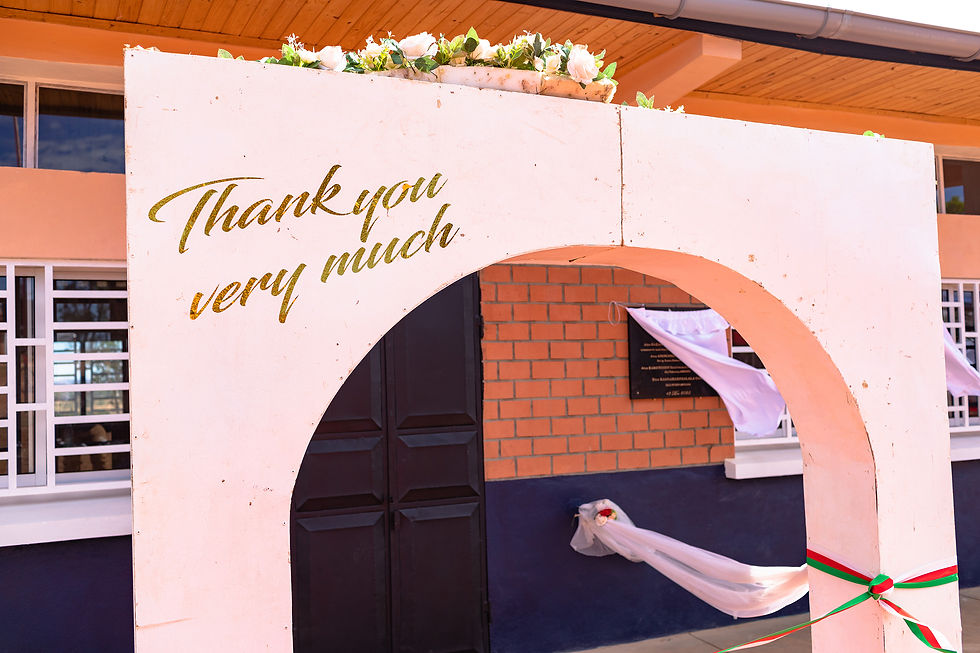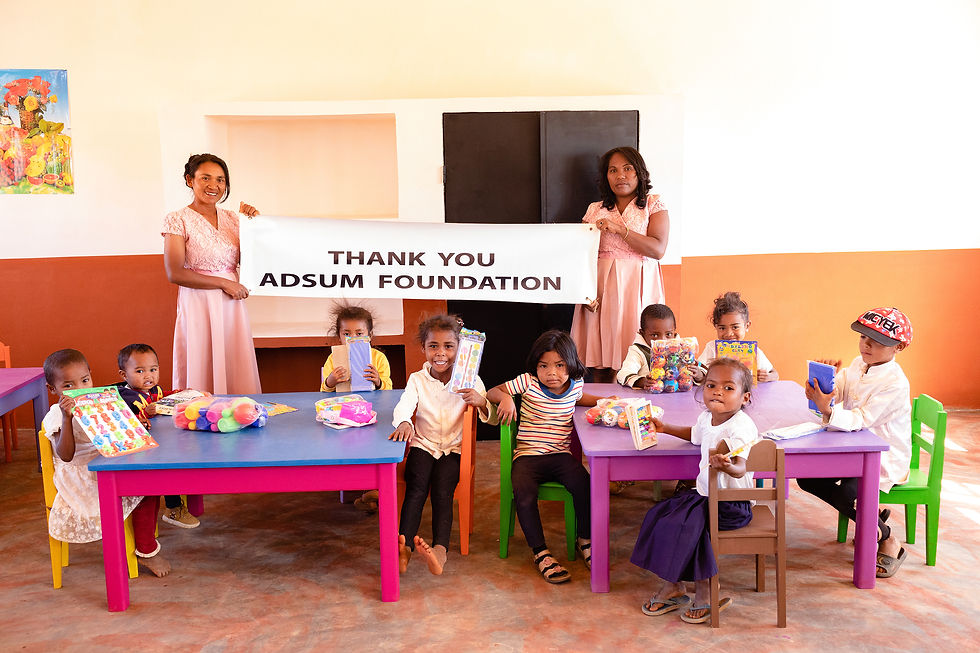Amboara Primary School
inauguration: May 13, 2025 🎉
Thanks to Adsum Foundation and JivinGym for financing this project ❤️
📍Location: The village of Amboara,
Rural Commune of Imerintsiatosika,
District of Arivonimamo,
Itasy Region
💡Objectives:
-
To improve access to primary education and increase capacity
-
To improve teaching/studying conditions
-
To contribute to the alleviation of poverty
-
To provide a healthier working/studying environment; to motivate the teachers, and give the pupils a greater sense of wellbeing




Amboara's old Primary School was built by the commune in 2017 with funds raised locally – drawn from their own meagre resources. The building was made from uncooked mud bricks and consists of 1 classroom. A state house is borrowed to make the 2nd classroom.
The school had 100 registered pupils, and was already overcrowded. But there were at least 100local school aged children not yet in education due to the school’s limited capacity.
The school building was in a very poor condition The roof leaks, the walls are cracked and the Head teacher was fearful it may collapse – exposing the pupils to potential danger. The classrooms were far from meeting acceptable standards of hygiene and health, and working conditions for the students and teachers were unsatisfactory
To tackle the problem of overcrowding, half the children were taught in the morning and the rest in the afternoon. Even so, pupils of different levels were forced to share the same classroom – causing confusion and reducing the teachers’ effectiveness. Staying focused in such conditions presents young children with a huge challenge.
The parents of children taught in the afternoon were seriously concerned for their safety due to the torrential rain, flooding, swollen rivers and violent, and sometimes life-threatening thunder storms that are a regular feature of the rain/cyclone season (December to March). Some of the pupils live up 5 kms away and walk up to an hour to get home. To spare themselves the fear and anxiety some parents withdraw their children from school during the rainy season – disrupting their education and damaging their future, potential employment prospects. That’s why the children number drop from 109 to 100.
The school didn’t have a water point. There was just one latrine, and it was in poor condition and far from meeting acceptable standards of hygiene and health.
The school has 6 teachers of which one is a civil servants and paid by the government. The other five, who are recruited locally, are paid partly in cash and in kind (cassava and sacks of rice) by members of the Association of Parents whose children attend the school, and receive a small subsidy from government.
